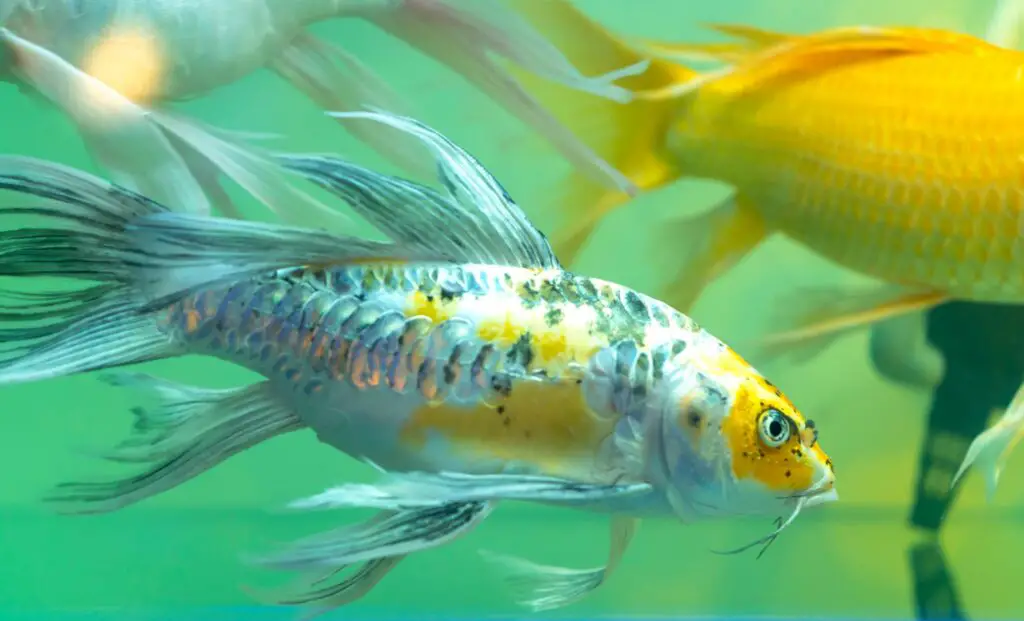
Many people breed koi fish for their spectacular colors and ability to turn a boring pond into delightful visual entertainment allowing koi owners to watch their fish swim about in the tranquil waters. Many people might be surprised to find out that koi fish are exceptionally social creatures amongst themselves and towards people. They display numerous kinds of social behavior that, once understood, open up a whole new world for koi owners.
Koi fish are relatively docile animals. They often exhibit friendly behavior towards one another and are even known to eat out of their owner’s hands. They can display aggressive behavior in times of food or space shortages. Breeding behavior includes male koi bumping or nudging females.
Koi fish, like other animals, display individuality; therefore, they will not all behave in the same manner. Although, commonly, they will mostly have similar social and behavioral traits. Knowing what you should look for will help you better understand your pet koi fish’s behavioral characteristics and social interactions. It will also help you pick up when your koi are happy, stressed, unwell, or nervous.
Pro Tip: If you’re tired of wasting money and making costly mistakes on the koi-keeping hobby or are thinking about buying koi fish but don’t know where to start, I strongly suggest you check out this ebook. I recently read this ebook, and it contains SO much useful information, such as:
- 3 proven steps to identify koi fish diseases
- WARNING: 3 things you should NEVER do when it comes to caring for koi
- When to seek professional help when it comes to looking after your koi
Three Types Of Social Behavior Displayed By Koi Fish
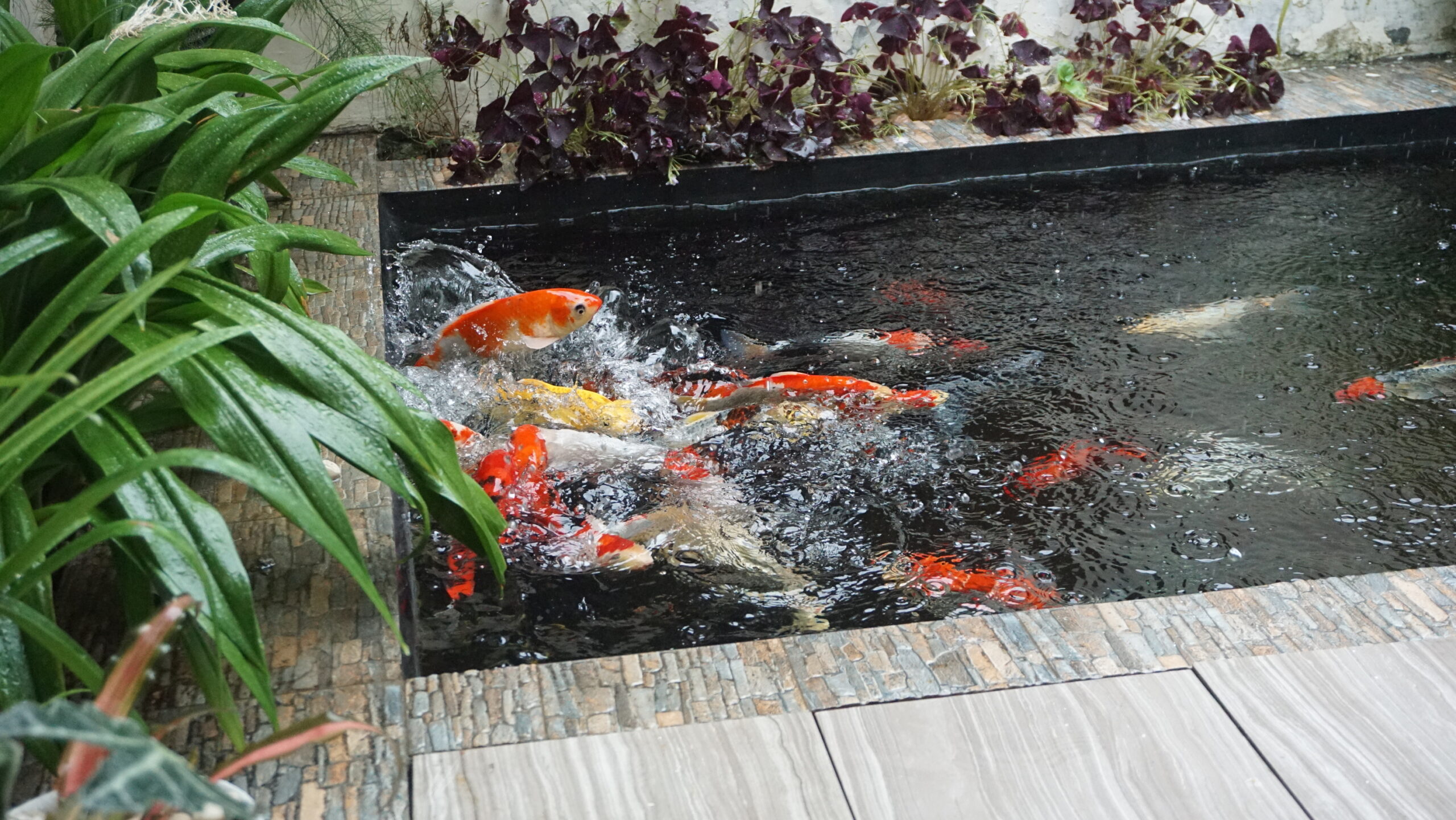
Your koi fish will display several different types of social behaviors, and knowing some of the behavioral traits of each will help you better understand your koi. Let’s take a look at three of these social behaviors.
Koi Social Behavior: Friendly Behavior
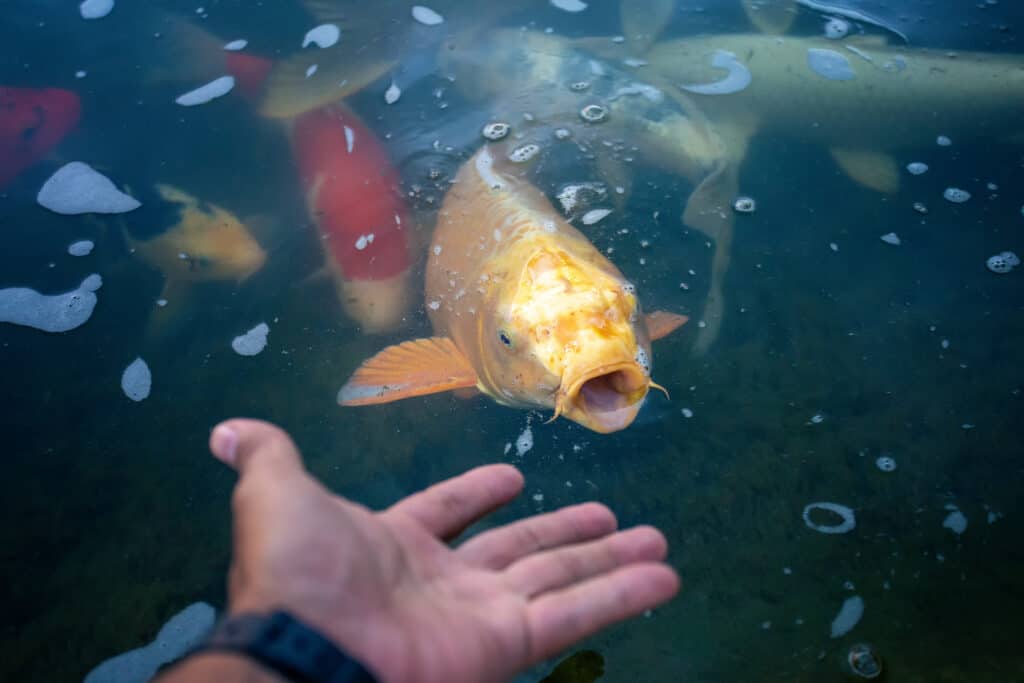
Overall, koi are very docile fish and will happily share their pond with other koi or fish with similar pond environment requirements. Koi fish prefer to hang out together, and you can often spot them swimming in groups or relaxing together near the bottom of their pond.
Each koi fish will display unique characteristics. Even if most of them are friendly, you get the odd individual who will be more boisterous than the rest, resulting in a few of your koi chasing others around the pond. In some situations, you could come across a koi fish that prefers its own company, remaining on the outskirts of the pond or hiding in the shadows away from the other fish.
When it comes to human and koi interaction, often, you can get your koi fish so used to you that they will eat food out of your hand. Koi fish also have great memories and will recognize their owner’s face, swimming to the surface or edge of their pond to greet you when you visit.
Koi Social Behavior: Aggressive Behavior

In some cases, koi can show aggression towards one another or other fish in the pond. In these instances, you might notice them nipping each other on the back or their fins or swimming after one another. They can also display over-boisterous behavior towards one another, pushing each other around.
Suppose you have recently added a new koi into the mix. In that case, there might be some aggressive behavior displayed by either the old koi or the new koi, and this is usually the result of your fish finding a way to become comfortable with each other in the space they are sharing.
Aggressive behavior can also be the result of an unhappy pond environment. If, for instance, your pond has become overcrowded or is in poor condition, your koi can become disheartened, and this could push the fish into survival mode. This survival mode could result in your koi behaving aggressively toward one another.
Another causation you should watch out for is if you are not feeding your koi enough. In this instance, your koi will resort to aggressive behavior because of food competition.
One way to prevent your koi from divulging into aggressive behavior towards one another would be to ensure that your koi pond does not become overcrowded, degrade into poor conditions, and have enough food. Also, keep your eye on them if introducing a new individual into the pond.
Koi Social Behavior: Breeding Behavior
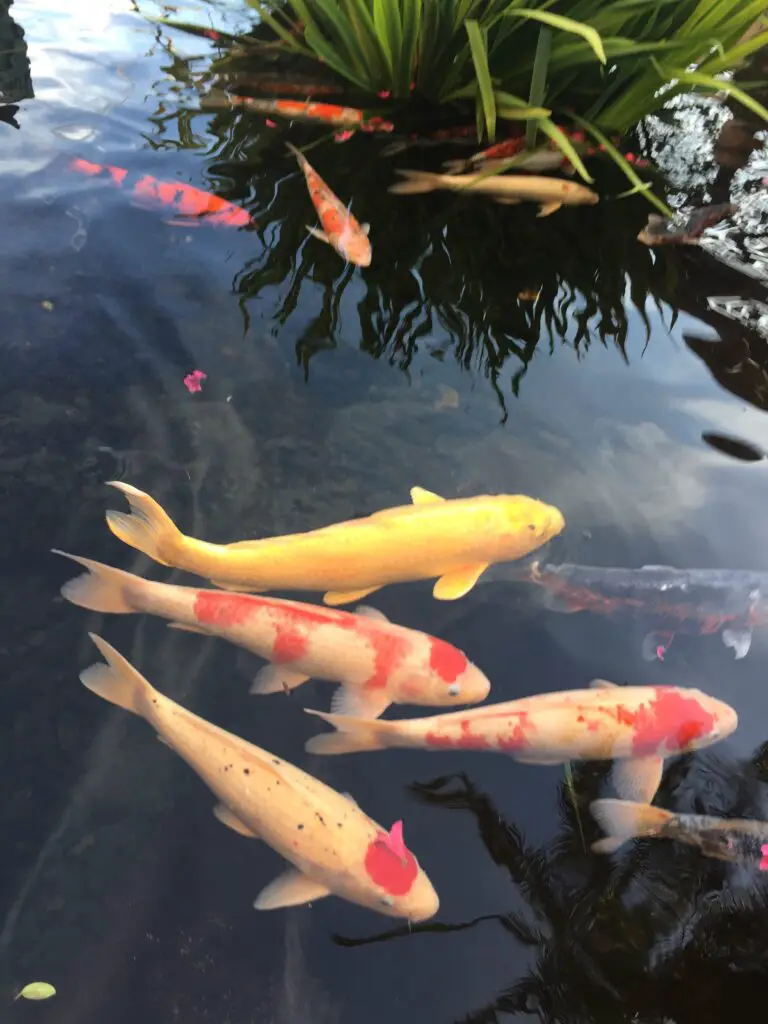
Around the end of spring and, in some cases, the beginning of summer, you can expect your koi fish to start behaving rather oddly towards one another, especially the behavior between the males and the females. This odd behavior indicates the beginning of the breeding season and comes with its social behaviors.
These social interactions include your males getting quite attached to your females’, often showing vigorous behavior toward them. Overall your koi will start to display signs of being excited, such as jumping, flailing, pushing, and overall being more active than they usually are. You might also notice an odd smell around your pond which is a good indicator of spawning time.
Don’t be surprised if you notice your males beginning to push your females up against or towards vegetation or any other areas that could act as an anchor for her eggs. The males are just trying to get their females into a good position, excited to start the spawning process.
Once the spawning process begins, your females will lay their eggs in batches in areas where they have something to attach to, and the males will then swim past these eggs to fertilize them. Once your koi have completed the spawning process, which can often take all day, you can expect your fish to display signs of tiredness and energy depletion, this is normal, and there is no cause for alarm.
This sluggishness can last a couple of days after the spawning event. During this time, your koi will often eat a large percentage of the eggs to help rejuvenate themselves.
How Can You Tell If A Koi Fish Is Happy?
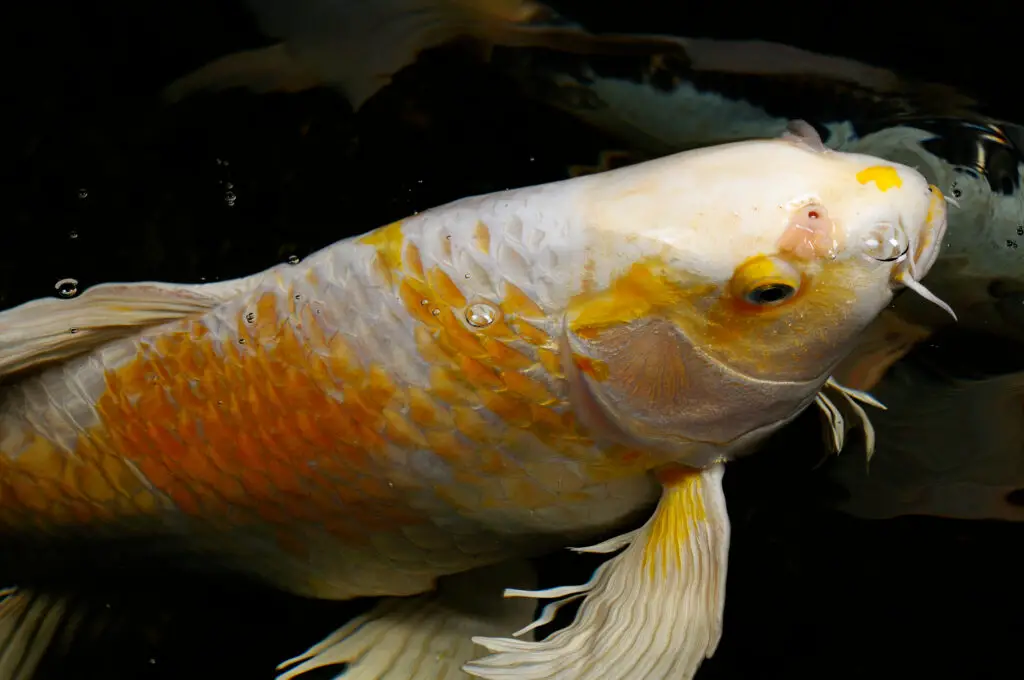
Koi fish are overall happy, docile fish. Their usual behavior includes swimming around their pond, often in a relaxed slow manner, sunning themselves, or curiously searching out exciting things or tasty morsels at the bottom of the ponds or around rocks and plants. They often do this exploring in groups, although it is not unusual to spot a single koi exploring on their own.

Koi are social creatures, and they will interact with the other koi and come to greet their owner at the edge of the pond during meal times or when you pass. Happy koi will have pristine-looking scales, interact normally, and be friendly with their pond mates.
When your koi are happy, they will feed well. Koi are avid feeders and often gather in groups around the edges, mouths agape, waiting for their food. A happy koi can consume a whole portion of their food in minutes.
One thing to remember is that this behavior will differ during the seasons. You can expect your koi to feed much more willingly and eat more food during summer than at the beginning of spring, autumn, and winter.
Keep an eye on your koi; if they display typical behavior for their unique personality, you should have no cause for alarm. On the other hand, if one individual koi has moved away from the group when it is ordinarily social or displaying behavior, social or otherwise, that is not typical for that particular koi, and its behavior could indicate a sick or unhappy koi.
How Can You Tell If Your Koi Fish Is Unhappy?

The usual docile nature of koi can often change in moments, or you might notice that subtle changes occur over time. Different behaviors result from various issues or problems in your pond or its surroundings. Knowing these behaviors can help you understand what makes your koi unhappy and can often help you rectify the situation before your koi suffer from adverse side effects.
Koi Behavior: Flashing And Jumping
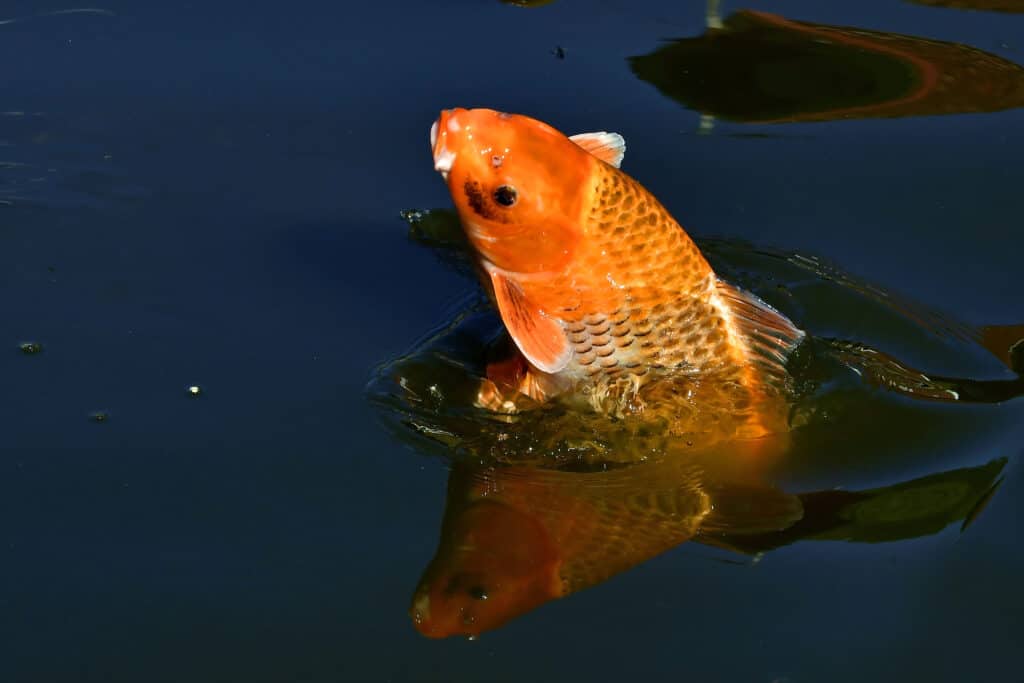
When koi are sick or stressed out, they can often become delirious. The delirium can result in your koi ‘flashing’ or unusually swimming around their pond. This different manner can include your koi swimming sideways, upside down, scratching their scales against rocks or other rough surfaces. You might also notice that they repeatedly jump out of the water for no apparent reason.
When you notice your koi scratching their scales on rough surfaces, it is usually the result of some form of ectoparasite attached to their scales. These actions could also be due to spikes in the pond water ammonia levels or decreased oxygen in the water.
Suppose you start to notice this type of strange behavior amongst your koi. The best thing would be to test your pond’s oxygen and ammonia levels. If these are normal, then check your kois’ scales for parasites.
Koi Behavior: Koi Acting Skittish
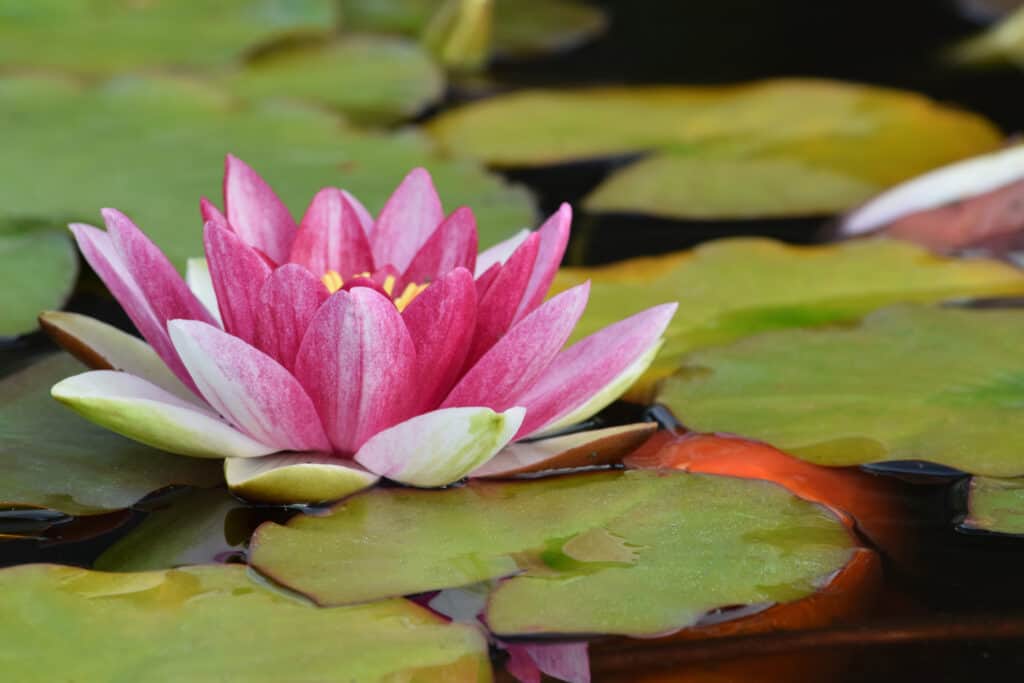
If you have recently moved your koi into a new pond environment or a quarantine setup and your koi begin displaying skittish behavior, don’t worry. This behavior is probably normal. Your koi will take some time to adjust to a new environment and will often be wary until the koi fish are sure the new space is safe.
It might be concerning if you notice skittish behavior amongst your established koi, as it could indicate that predators are visiting the pond. You might see this nervous behavior accompanied by your koi hiding amongst plants, under rocks, or heading to the bottom of the pond. In these instances, you might want to go out and check around your pond, chasing away unwanted guests.
Koi Behavior: Koi That Are Hiding Or Isolating
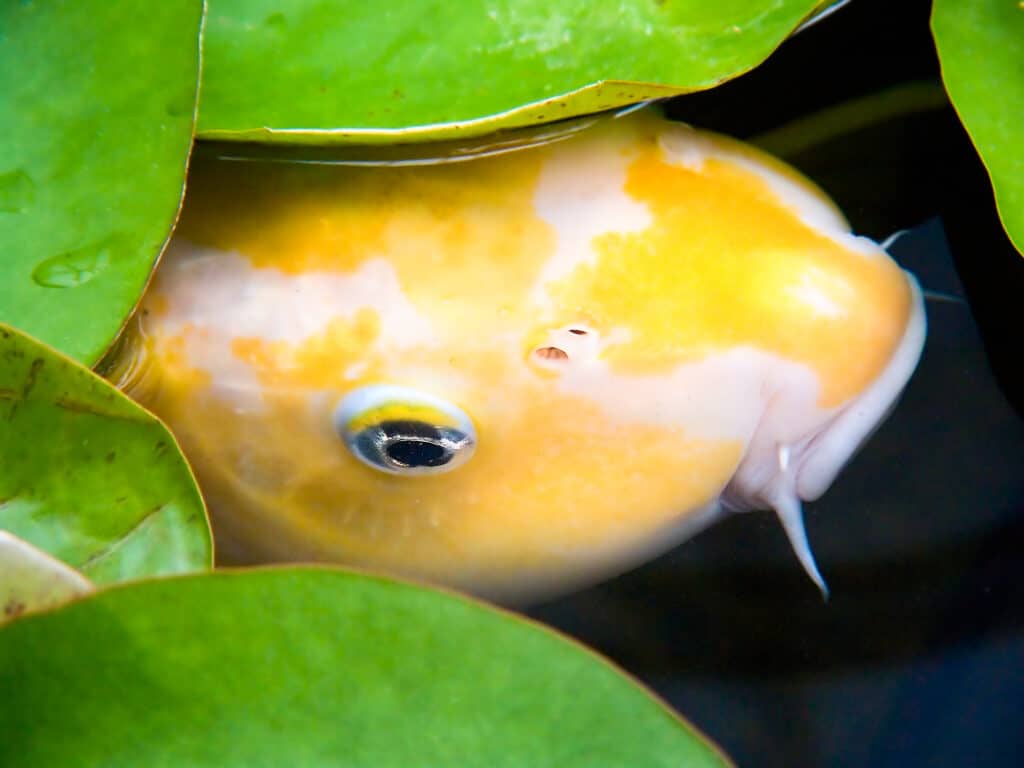
In some instances, you might become aware of your koi actively seeking out hiding spots or places where they can be alone. This behavior is not typical koi behavior as they are primarily social creatures preferring the company of other koi fish. If this hiding or self-isolation is a distinctive trait of this particular koi, you shouldn’t be too worried. Keep your eye on your fish to ensure they are still feeding well.
If, on the other hand, this is not typical behavior for this particular koi, then you should consider that it might be sick, scared of predators in the area, or even depressed. If you have noticed predators hanging around, this behavior could be a safety mechanism. Keep your eye on the fish, and if it returns to the rest of the koi, there is no need for concern.
If your koi is an older fish, this behavior might result from changes you might have made to the pond, a recent water change, a pond accessory change, or even the introduction of a new fish. If there have been no changes, you might want to look at your koi if it is sick.
Koi Behavior: Koi Remaining At The Bottom Of The Pond
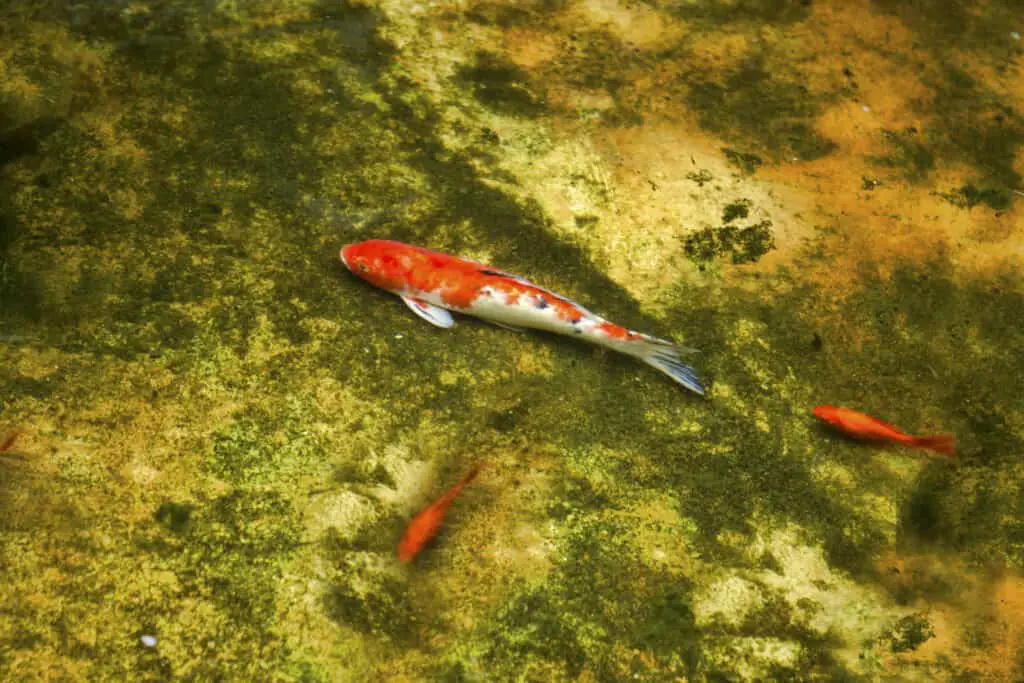
Although koi fish are happy to sit and relax in one spot for a while, they will not do so continuously. Koi must exercise during the day, stretching and swimming around, especially if conditions are favorable. Koi are also social creatures and prefer interacting with other koi at some stage during their day.
Suppose you notice that one of your koi is opting to remain at the bottom of the pond for extended periods, choosing not to move; even when weather conditions are favorable or during feeding time, you are probably dealing with a very sick fish. In this instance, the best thing to do would be to isolate the koi as soon as possible. After this, you should check the water parameters of your pond to ensure that the lethargy is not a result of poor water conditions.
Koi Behavior: Koi Seeming Like They Are Gasping For Air
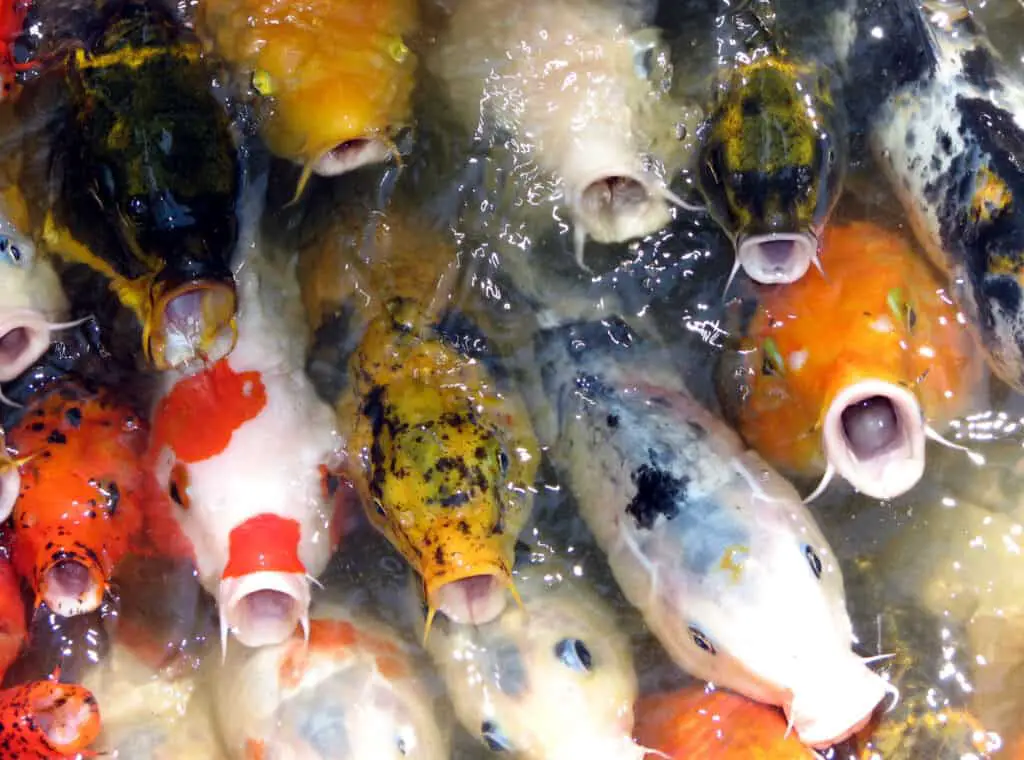
Suppose you notice that your koi are at the water’s surface, seeming like they are gasping for air. This gasping could indicate low oxygen levels in your pond’s water. Overcrowding and faulty filtration systems can lead to depleted oxygen in the water, which could be lethal for your koi.
If only one of your koi fish behaves this way, it’s probably due to hunger or curiosity. On the other hand, if you see that most of your koi behave this way, you will need to act fast. Supplement your pond with another form of aeration and do a water change if necessary.
Conclusion
You can expect your koi fish to exhibit three types of social behavior, friendly, aggressive, and breeding. Your koi most commonly exhibit friendly social behaviors as koi are relatively docile, social fish. If you see that a few of your fish are acting aggressively towards one another, check to ensure you do not have an overpopulation issue or are feeding your koi enough. Lastly, if you notice your male koi are bumping into your females during springtime, this could indicate that spawning time is starting.
References
https://www.quora.com/How-can-you-tell-if-a-koi-fish-is-happy
https://www.petmd.com/fish/care/evr_fi_facts-about-koi-fish
https://www.thesprucepets.com/koi-fish-species-profile-5183977
http://www.vetstreet.com/our-pet-experts/8-things-we-bet-you-didnt-know-about-koi
https://www.quora.com/What-is-the-behavior-of-a-koi-fish


